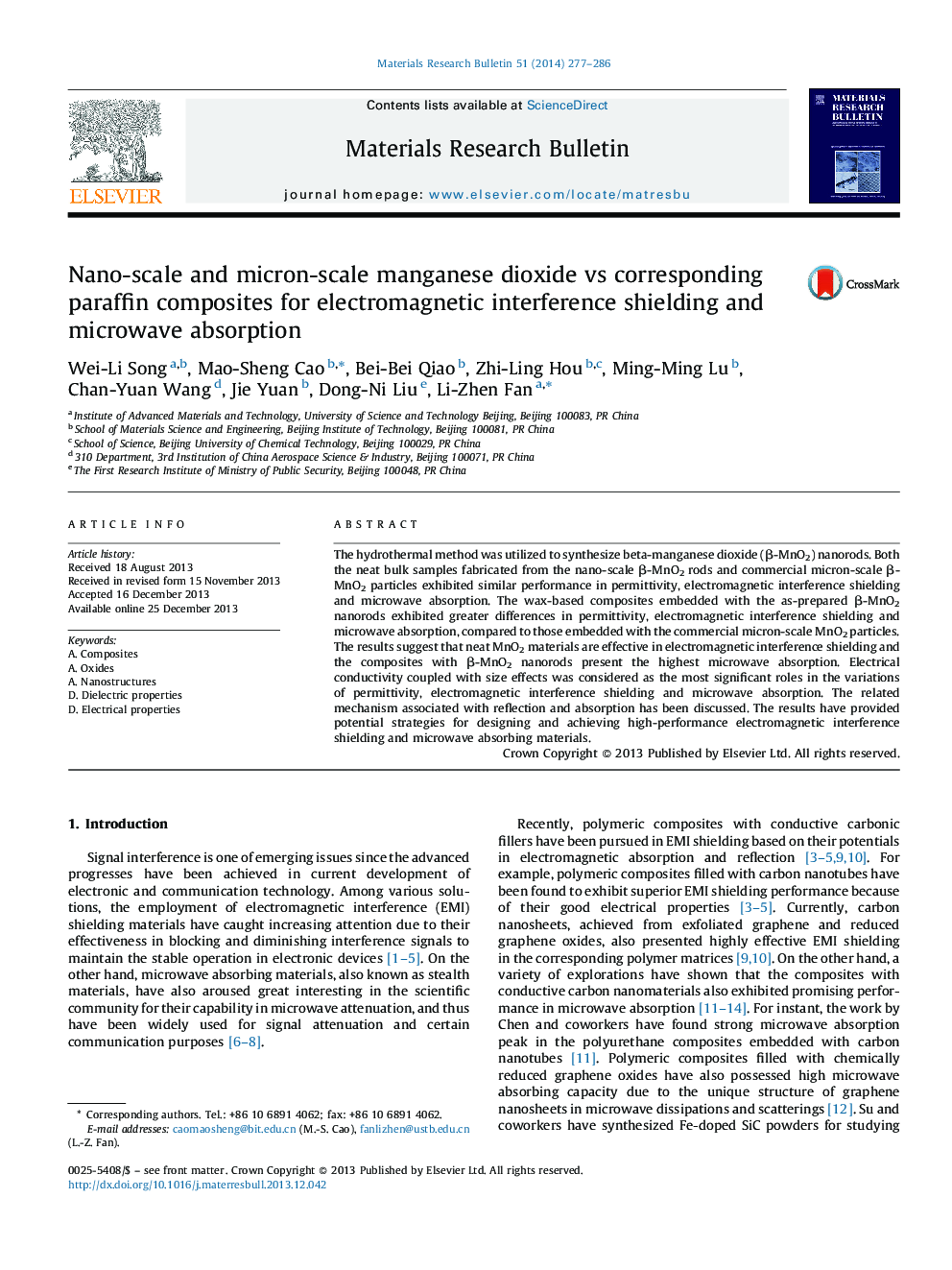| کد مقاله | کد نشریه | سال انتشار | مقاله انگلیسی | نسخه تمام متن |
|---|---|---|---|---|
| 1488200 | 1510724 | 2014 | 10 صفحه PDF | دانلود رایگان |
• Both neat nano- and micro-scale MnO2 are effective in EMI shielding.
• Higher electrical conductivity results in both higher reflection and absorption SE.
• MnO2 nanorod/wax composites have higher properties than micron MnO2/wax.
• Only MnO2 nanorod/wax composites showed sufficient microwave absorption.
• Moderate electrical conductivity could achieve optimized impedance match.
The hydrothermal method was utilized to synthesize beta-manganese dioxide (β-MnO2) nanorods. Both the neat bulk samples fabricated from the nano-scale β-MnO2 rods and commercial micron-scale β-MnO2 particles exhibited similar performance in permittivity, electromagnetic interference shielding and microwave absorption. The wax-based composites embedded with the as-prepared β-MnO2 nanorods exhibited greater differences in permittivity, electromagnetic interference shielding and microwave absorption, compared to those embedded with the commercial micron-scale MnO2 particles. The results suggest that neat MnO2 materials are effective in electromagnetic interference shielding and the composites with β-MnO2 nanorods present the highest microwave absorption. Electrical conductivity coupled with size effects was considered as the most significant roles in the variations of permittivity, electromagnetic interference shielding and microwave absorption. The related mechanism associated with reflection and absorption has been discussed. The results have provided potential strategies for designing and achieving high-performance electromagnetic interference shielding and microwave absorbing materials.
Figure optionsDownload as PowerPoint slide
Journal: Materials Research Bulletin - Volume 51, March 2014, Pages 277–286
